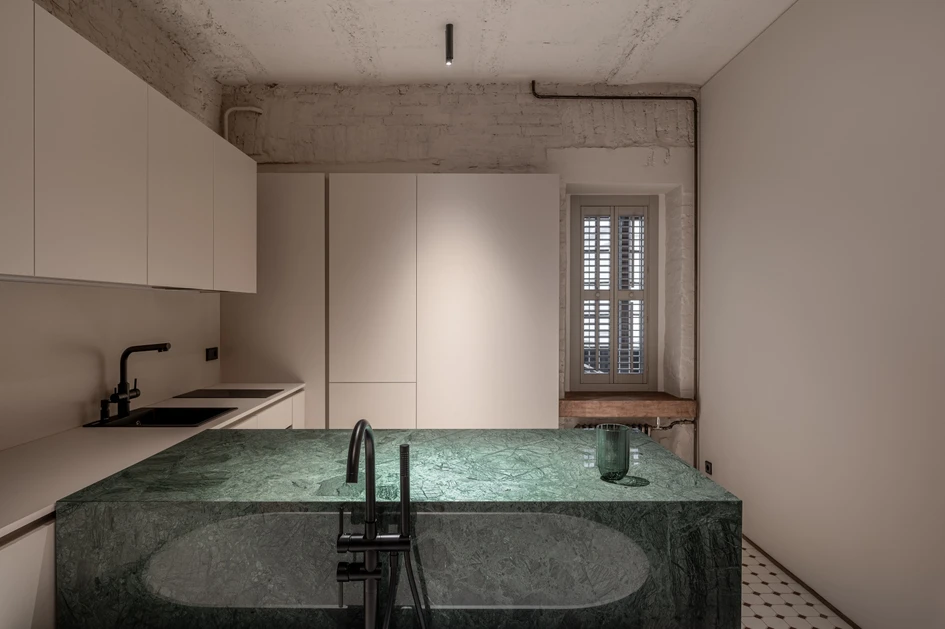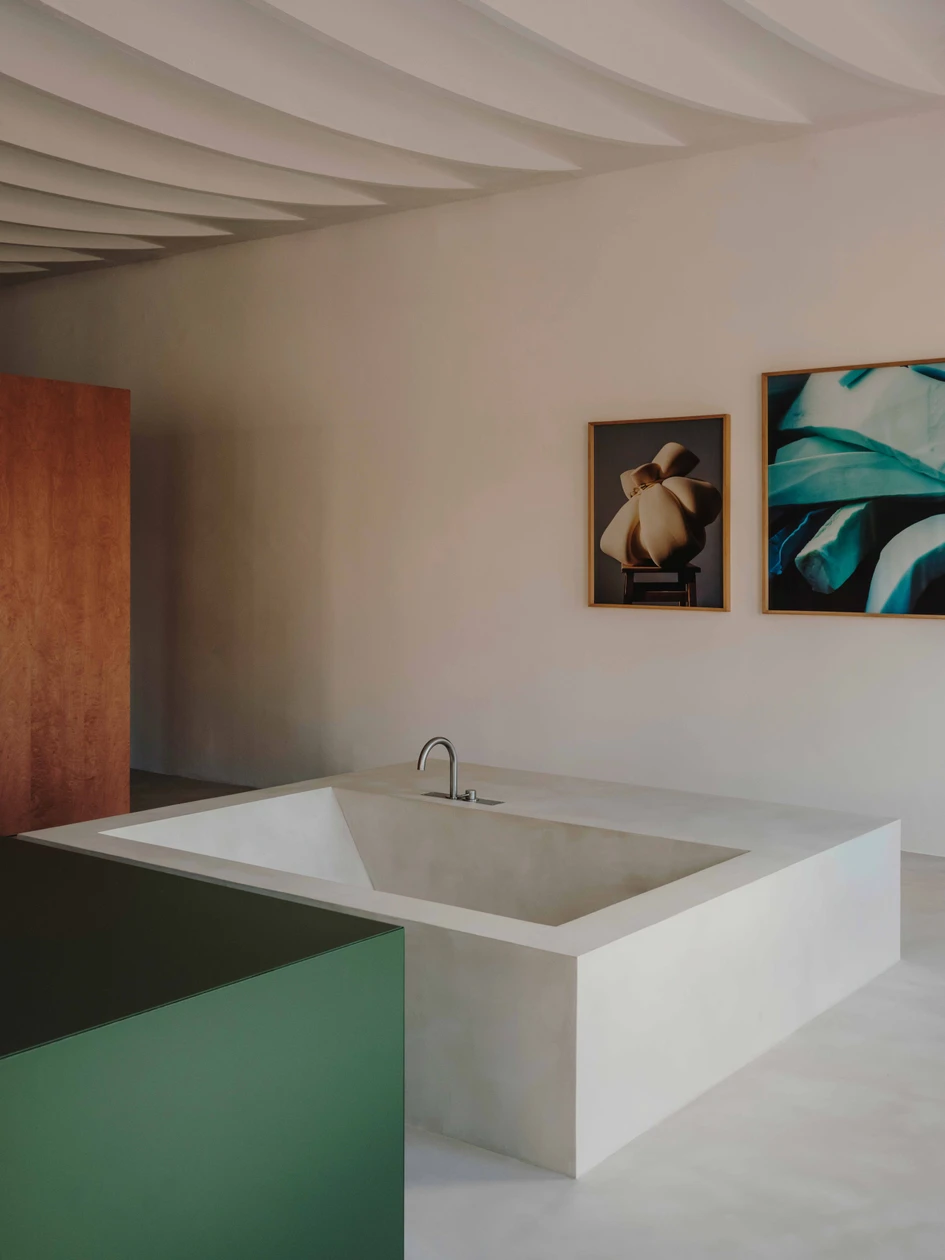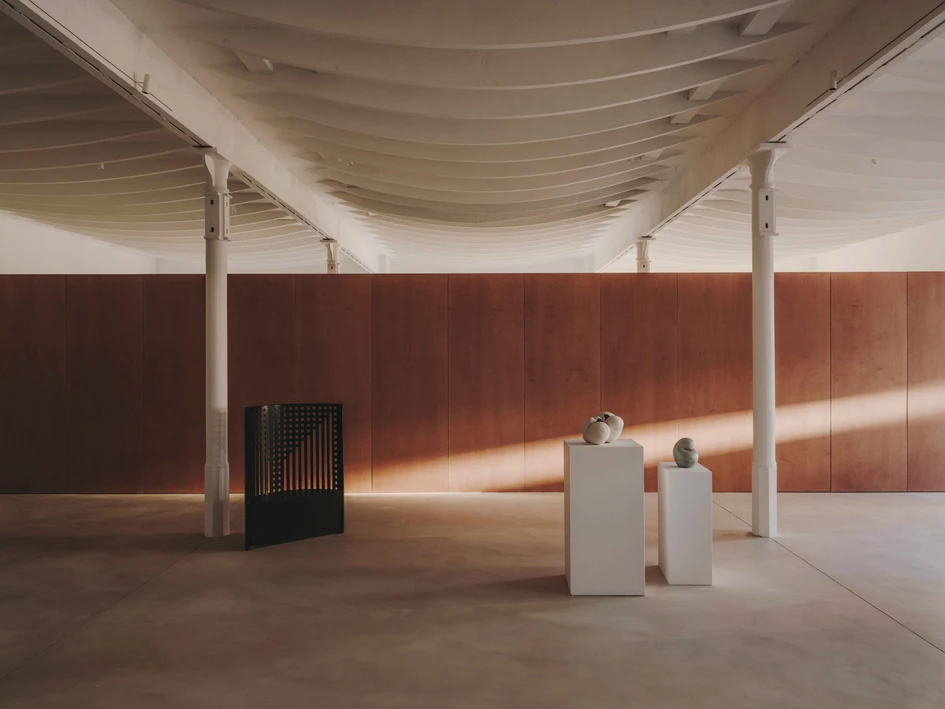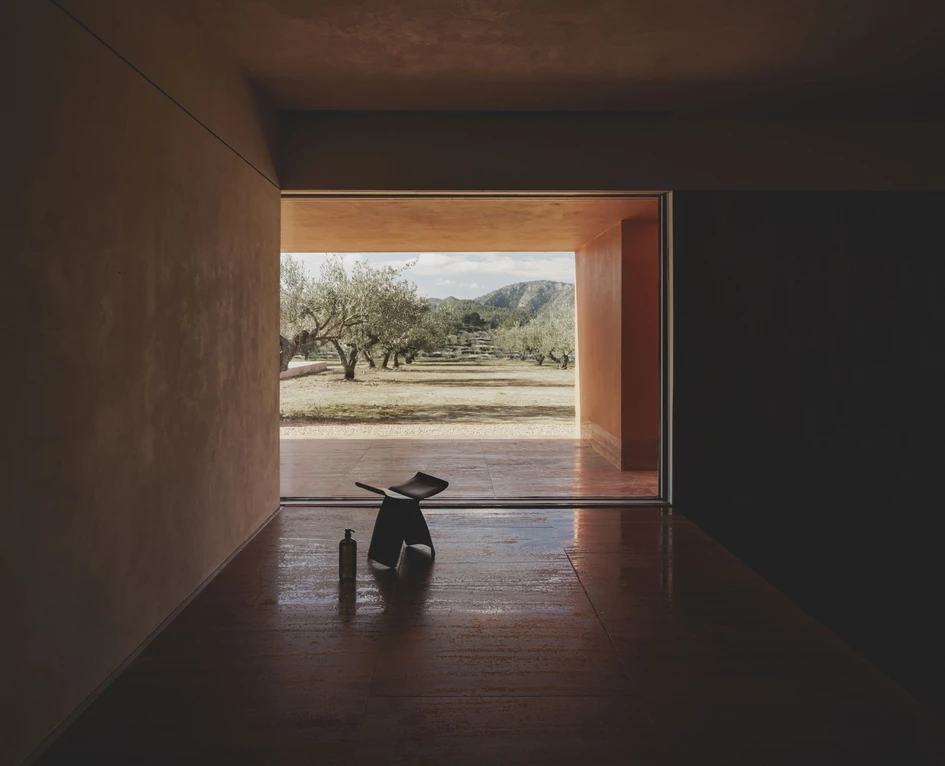No bath-room: dismantling bath functionality myths
No longer confined to a closed, isolated and dimly lit area, these bathrooms are integrated into the broader domestic space. Featuring Nastia Mirzoyan, PuntoFilipino, Mesura and Balzar Arquitectos
marzo 17, 2024 | 11:00 pm CUT

In contemporary interiors, the notion that bathroom spaces are purely functional, guided solely by technical, physiological and psychological needs, is challenged, especially in the context of bathrooms. The concept of private property often compartmentalises human activities, isolating them into distinct areas. However, spaces like the bedroom, dining room, kitchen and bathroom are more than just functional areas; they represent a journey through our daily needs and activities.
While traditionally viewed as a space for two fundamental activities – bathing and waste elimination – the modern bathroom has undergone a significant transformation. The components of the bathroom, once relegated to hidden corners, now take centre stage, blurring the boundaries that once enclosed hygienic activities. This shift transforms the following four bathroom projects into multifunctional sanctuaries, where architectural design embraces spatial qualities that challenge conventional notions.



In this apartment, distinct zones serve specific purposes, with a dedicated wet zone combining elements of the kitchen and bathroom. Despite its compact size, Grogol’s layout allows for the inclusion of a bathtub with the kitchen island acting as its backdrop. As a result, one bathroom option extends into the kitchen space, while the shower and toilet maintain privacy within a separate enclosure.
Nastia Mirzoyan's design blends the concepts of kitchen functionality and personal care, challenging conventional notions of separate spaces for food preparation and hygiene. By intertwining these functions, the apartment reflects the unique perspective and lifestyle of its youthful resident, departing from traditional norms to create a space that is both practical and expressive.



A pink marble tub takes centre stage at the foot of the bed in this project. Adjacent to it, an office space nestled behind the sink completes the fusion of bathroom and bedroom elements. Radikal Klassisk's aesthetics integrate these features into the space, creating an illusion of timeless coherence. Through the selection of finishes and elements, a romantic ambiance permeates the room, evoking a sense of nostalgia.
Here, the bathtub transcends its conventional association with hygiene, sharing equal prominence with the bed as a space for rest. PuntoFilipino's proposal captivates with its daring choices and unconventional layouts. This aesthetic knows no bounds, allowing each object to express its unique power and purpose freely. Whether it's the bathroom integrated into the bedroom or vice versa, the design blends these spaces, underscoring their intrinsic connection and coexistence.



Within this expansive space, the domestic domain in Vasto Gallery intertwines with an adjoining art gallery, conserving an open floor plan. Divided into discrete sections, the private and public realms are delineated by a wood element. Here, the core components facilitating domestic life take on an almost sculptural quality, transforming the apartment into a personalised space amidst an industrial backdrop.
Mesura describes: ‘By maintaining some of its original vagueness, this intervention recognises the client’s way of life by using spatial indetermination to blur the limits of the domestic sphere.’ The bathtub, handcrafted on-site, is positioned near the bed and directly faces the sinks. In this arrangement, everyday fixtures take on an statuesque quality, blending practicality with an artsy aesthetic appeal.



Water plays a central role in the design of Olivos House, manifesting itself in various forms throughout the residence. One notable feature is a pool that extends into the interior space, its terracotta-toned surfaces lending a sense of freshness. The interplay of water with the material creates captivating wet areas, blurring the boundaries between indoor and outdoor spaces and inviting a dynamic interaction with the elements.
Balzar Arquitectos encased the showers in large windows, dissolving the notions of privacy and the impulse to conceal nudity within closed, dim spaces. Embracing natural light and external vistas, water facilitates a dialogue that blurs the boundaries between interior and exterior realms. This integration imbues every bathroom space with a simultaneous experience of both interior comfort and exterior immersion.
© Architonic
Head to the Architonic Magazine for more insights on the latest products, trends and practices in architecture and design.
Galería de proyectos


















